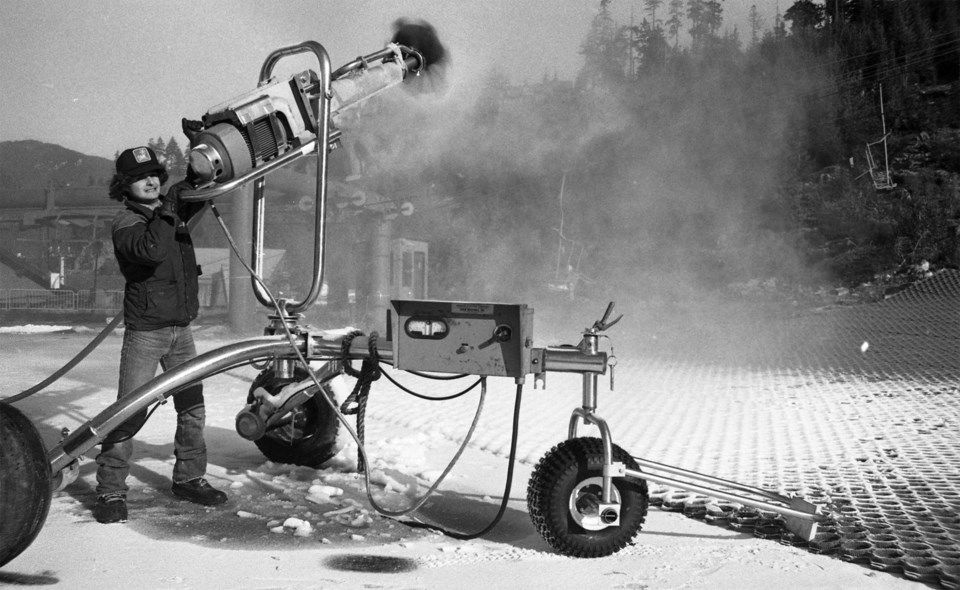For the first decade of operations on Whistler Mountain, an abundance of snow was normal for the ski season. The season of 1973-‘74 was a record-setting winter, with Whistler Mountain recording a base of just over five metres in the early spring. After so many seasons, most people had grown to expect Whistler always to have lots of snow. According to John Hetherington, who was working on ski patrol at the time, “We just thought it would go on forever.” Then, just a few years later, it didn’t.
The season of 1976-‘77 is often described as one of the worst ski seasons Whistler Mountain ever had. The Whistler Question reported that over the American Thanksgiving weekend, “a few hardy souls went up the mountain to hike up and down either at the top of the Red or the ridge behind the top of the Blue Chair.” By Christmas it had snowed a little bit more and Whistler Mountain was able to open, but skiers had to download by the Red Chair and the gondola. Then, in January 1977, it rained to the top of the ski area and washed away what little snow there was. The lift company closed for the rest of the month and well into February.
This complete lack of snow inspired the first attempt at making snow on Whistler Mountain. While today snowmaking is carefully planned, has a large infrastructure behind it, and follows stringent procedures, that was not the situation described by Hetherington and fellow patroller Roger McCarthy. According to Hetherington, “Back then, Whistler was pretty wild out there and things were pretty loose… Nobody gave a damn what you did on the mountain.”
In this case, what ski patrol did was use an entire case of the explosive Submagel to blow a huge crater in the creek at the bottom of Green Chair.
They built a dam at one end of the crater, got some pumps, borrowed a snowgun from Grouse Mountain (Grouse had installed the first snowmaking system in British Columbia in 1973), and began making snow to get skiers to the bottom of the Green Chair without having to carry their skis for the last 100 metres or so. Once the crater slowly filled, it could support about two to three hours of snowmaking.
However, McCarthy recalled the system was far from perfect.
“The challenge was that any time we tried to make snow, it got cold enough to make snow, the water would stop running and stop filling the little creek and we’d end up sucking mud into the pumps,” he said.
“So it wasn’t that successful, but it was the beginning.”
Packer drivers were able to spread what snow they did make to form a narrow run to the bottom of the Green Chair, providing some temporarily skiable terrain.
This first attempt at making snow signaled a shift as the lift company was forced to realize they would not always get the snow they were used to. In 1981, Sandy Boyd was hired as gondola area coordinator for the lift company and, already having experience with snowmaking, Boyd brought more of it to Whistler through the 1980s. Today, as the questions of snowfall and the impacts of climate change on Whistler are never far from mind, snowmaking is an important part of mountain operations and it is not uncommon on a clear night to see the snowguns at work on both Whistler and Blackcomb Mountains.




